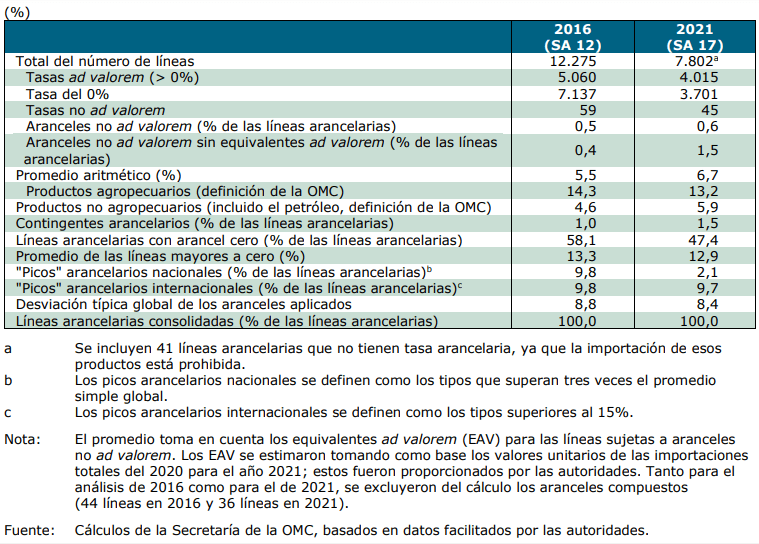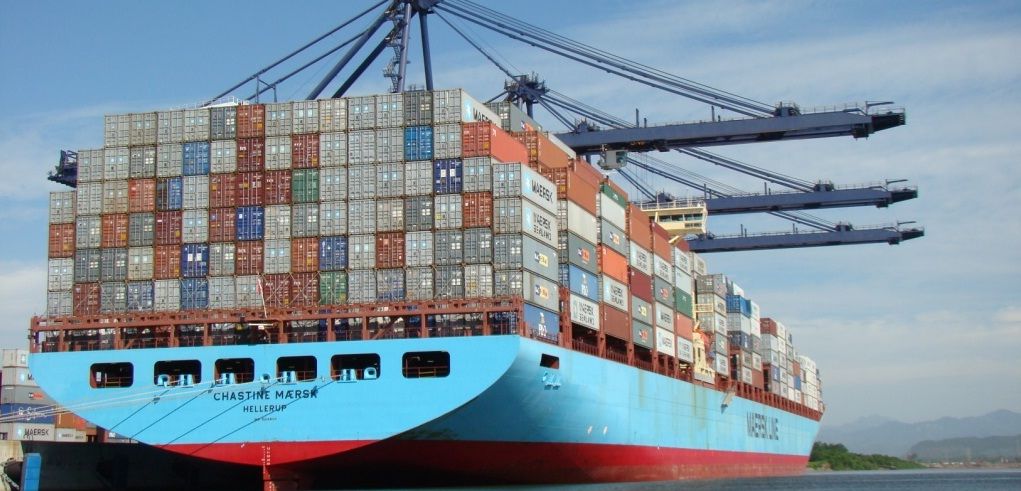Mexico is a founding member of the WTO and grants at least most-favored-nation (MFN) treatment to all of its trading partners.
On average, the highest tariffs per WTO category continue to be applied to agricultural products, specifically sugar and confectionery, and dairy products, with tariffs of 30% (40.9% in 2016) and 22.1% (40.9% in 2016), respectively.
Average applied tariffs on animals and animal products, which in 2016 were 24.8 percent, were reduced in 2021 to 15.5 percent.
Average applied tariffs on non-agricultural products have not changed significantly, despite having increased for almost all products since 2016, except for fish and fish products (13.8 percent in 2021 and 15.5 percent in 2016).
Estructura de los aranceles NMF, 2016 y 2021
However, both fish and fish products and apparel (21.4% in 2021 and 21% in 2016) have the highest average tariffs.
MFN Tariffs
Mexico advocates a rules-based multilateral trading system that contributes to more inclusive development.
It also supports the elimination of distortions in the agricultural and fisheries sectors.
It also participates in joint initiatives that address new trade issues.
These include the integration of MSMEs into international trade, e-commerce, investment facilitation and domestic regulation in services.
It also promotes the link between trade and environmental sustainability.
Mexico participated in the preparatory work for the Twelfth WTO Ministerial Conference (WTO12), particularly in the preparation of several ministerial declarations on the promotion of gender equality and the economic empowerment of women in trade; trade and environmental sustainability; MSMEs; and sanitary and phytosanitary issues; as well as a joint communication on investment facilitation for development.
In 2021, applied tariffs -excluding compounds- ranged from 0% to 75%, compared to the maximum of 100% recorded in 2016.
The most frequent tariff rate was 0%, in force in 47.4% of tariff lines. In 2016, this proportion was 58.1%.
In January 2021, lines with an ad valorem tariff above 0% were subject to 15 different rates, compared to 18 in 2016.
These rates ranged from 3% to 75%, while in 2016 the ceiling was 100%.
After 0%, the most common tariffs in 2021 were:
- 15% (1,255 lines, 16.1% of the total).
- 10% (969 lines, 12.4%).
- 5% (849 lines, 10.8%).

